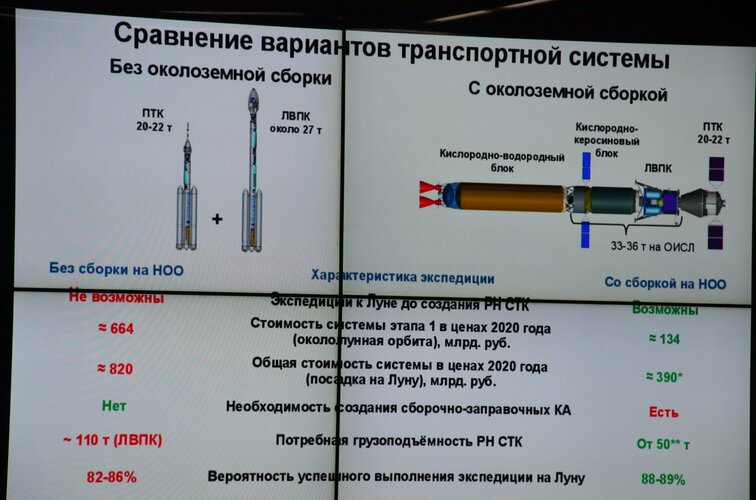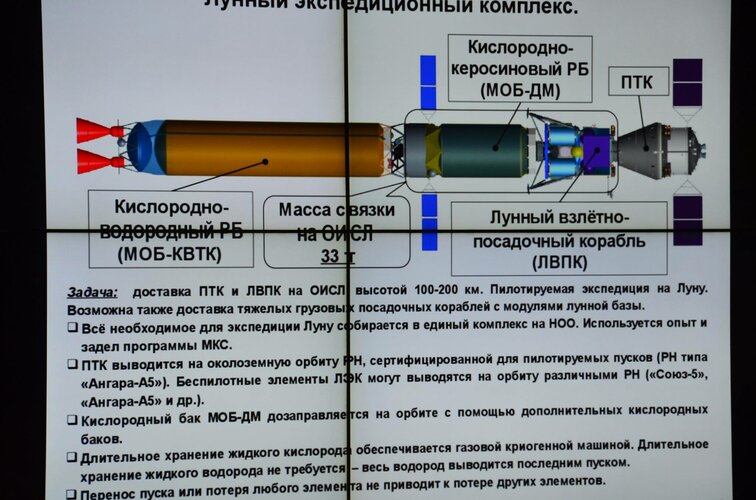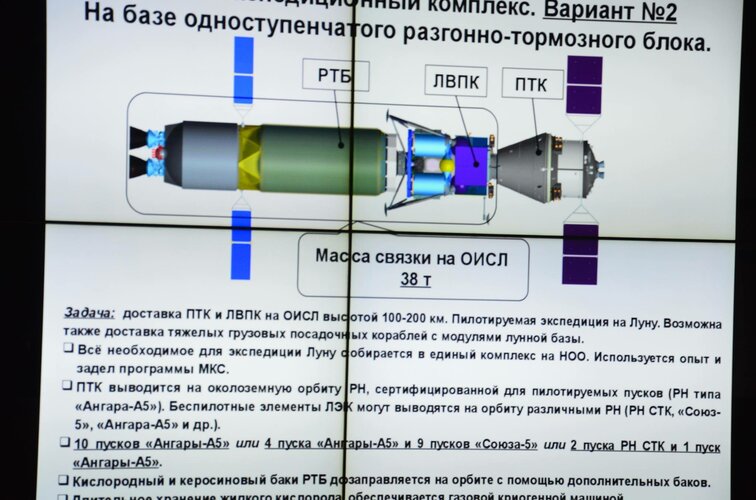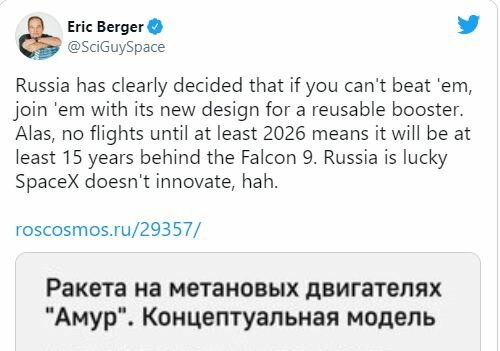- Joined
- 21 January 2015
- Messages
- 12,166
- Reaction score
- 16,389
Want to book a tourist flight to ISS? Roscosmos is preparing two extra Soyuz ships for tourist flights. https://t.co/0JZmGDEIDg
— Katya Pavlushchenko (@katlinegrey) May 29, 2020
Want to book a tourist flight to ISS? Roscosmos is preparing two extra Soyuz ships for tourist flights. https://t.co/0JZmGDEIDg
— Katya Pavlushchenko (@katlinegrey) May 29, 2020
The reusable winged crewed spaceship, which according to Rogozin will possibly be developed by Roscosmos, is not a revival of the Soviet space shuttle Buran, but rather of the #Spiral aerospace plane, said cosmonaut Oleg Artemiev in his Telegram channel: https://t.co/xppFE3V8c2 pic.twitter.com/XcWCb2nUhL
— Katya Pavlushchenko (@katlinegrey) June 1, 2020
The first launch of the Gonets-M communication satellites on the Soyuz-2.1b launch vehicle is scheduled for late September. This was reported by TASS a source in the rocket and space industry.
“The first launch of the Gontsov this year is tentatively scheduled for September 20,” the source said. According to the source, the Soyuz-2.1b rocket will be launched from the Plesetsk cosmodrome.
The search for the #benzene in the ISS atmosphere will be resumed at the end of July, when #ProgressMS15 brings new AQM device to the station. The AQM-1 previously used to monitor the air composition failed due to the short and cannot be repaired in orbit. https://t.co/FvZSKmdCQt pic.twitter.com/i4uNX8QJly
— Katya Pavlushchenko (@katlinegrey) June 24, 2020
The search for the #benzene in the ISS atmosphere will be resumed at the end of July, when #ProgressMS15 brings new AQM device to the station. The AQM-1 previously used to monitor the air composition failed due to the short and cannot be repaired in orbit. https://ria.ru/20200624/1573395980.html
Following the discussion by the Russian Defense Ministry of the close satellite approach between the Kosmos-2543 inspector satellite and te Kosmos-2535 target, a new debris object has been cataloged in a 505 x 784 km orbit associated with Kosmos-2543.
— Jonathan McDowell (@planet4589) July 17, 2020
Following the discussion by the Russian Defense Ministry of the close satellite approach between the Kosmos-2543 inspector satellite and te Kosmos-2535 target, a new debris object has been cataloged in a 505 x 784 km orbit associated with Kosmos-2543.
Object 45915 appears to have separated from Kosmos-2543 at about 0750 UTC Jul 15 at a fairly high relative velocity (I don't entirely trust my code here so someone else should look at this)
— Jonathan McDowell (@planet4589) July 17, 2020
Object 45915 appears to have separated from Kosmos-2543 at about 0750 UTC Jul 15 at a fairly high relative velocity (I don't entirely trust my code here so someone else should look at this)
1/2 Yesterday Dmitry Rogozin gave another interview to Vladimir Soloviev in Sololoviev Live. Nothing new was actually said, but I want to mention two points:
— Katya Pavlushchenko (@katlinegrey) July 24, 2020
1. MLM #Nauka wasn't sent to Baikonur yesterday as planned. But it will be sent to Baikonur by the end of July. pic.twitter.com/Qy5Z3vL0nF
1/2 Yesterday Dmitry Rogozin gave another interview to Vladimir Soloviev in Sololoviev Live. Nothing new was actually said, but I want to mention two points:
1. MLM #Nauka wasn't sent to Baikonur yesterday as planned. But it will be sent to Baikonur by the end of July.
And just a couple of days ago Rogozin told in an interview, that MLM #Nauka will be sent to Baikonur in July. I don't know who prepares information for him, but this person could be more accurate. The problem of Roscosmos is that one hand never know what the other one does. https://t.co/vYTxC0joy9
— Katya Pavlushchenko (@katlinegrey) July 26, 2020
2/2 Probably, #SoyuzMS17 will fly to the ISS by the ultra fast 2-orbit flight profile (3 h 20 min). At least, Rogozin asked RSC Energia to try to do it. Previously, Roscosmos press service declared that for Soyuz MS-17, the usual 6-hour flight profile is planned.
— Katya Pavlushchenko (@katlinegrey) July 24, 2020
MLM #Nauka arrived at Baikonur! Here it will undergo the electrical tests (more than 750 are planned) and other procedures before the launch, which is scheduled for Spring 2021. https://t.co/O3GmQhAOWc
— Katya Pavlushchenko (@katlinegrey) August 19, 2020
"Experts from ESA and Airbus Defense and Space arrived at Baikonur on October 22 and started working with the ERA manipulator on October 23," Pischel said.
According to the head of the ESA permanent mission, the specialists will work at the cosmodrome in close cooperation with representatives of the Energia Rocket and Space Corporation until early - mid-November. "This is the first of several planned trips of ESA specialists to Baikonur as part of the preparation of the manipulator for launch," said Pishel.
The #Fregat upper stage, originally intended to launch the Falcon Eye 2 satellite, will be sent back to NPO Lavochkin by sea. This May a leak of oxidizer was detected on this upper stage that was mothballed on Kourou cosmodrome. https://t.co/WXsu99Os3j pic.twitter.com/QbLBU5WmEB
— Katya Pavlushchenko (@katlinegrey) October 29, 2020
The completion of the preliminary design of #Soyuz5 was postponed for 8 months, until June 30, 2021. This postponement may be caused by a complex delay of all project stages, including the signing of the contract for the building of the launch complex. https://t.co/VOCuJZja1S pic.twitter.com/HaSbfeqHk7
— Katya Pavlushchenko (@katlinegrey) November 3, 2020
At today’s online conference, Vladimir Daneev, the deputy director for the crewed flights, shared the preliminary dates of the launches of the new ISS modules. MLM #Nauka will fly late April, and the launch of #Prichal is scheduled for September 2021. https://t.co/KkSHMbIlgs pic.twitter.com/CZxs6Dco5X
— Katya Pavlushchenko (@katlinegrey) November 2, 2020
The second test flight of #AngaraA5 is postponed from November 24 to November 28, said the source. The launch window for this launch lasts from November 20 to 29, and the final decision on the launch date will be made later. https://t.co/oERfpWXN4L pic.twitter.com/yactA5lgHp
— Katya Pavlushchenko (@katlinegrey) October 31, 2020
Received news that ESA's ERA has been unpacked from it's containers and inspected in Baikonur, more inspections and functional checks are planned next year before mating with MLM (Nauka) (old fit-check image below, hopefully a new one will follow...) #ESA #ERA #MLM #Nauka pic.twitter.com/WhqUUartck
— DutchSpace (@DutchSpace) November 16, 2020

Dmitry Petrov, the chief designer of the Angara, said yesterday in Space Wednesday (the weekly Roscosmos YouTube show) that the #AngaraA5, which will perform its second test flight soon, will not be constructively different from the previous one. It will carry 2,4 t of payload. pic.twitter.com/xuneEos7Em
— Katya Pavlushchenko (@katlinegrey) November 12, 2020
I hear Russian engineers are taking another look at cheaper, simpler alternatives to the troubled PTK Orel project and lunar expeditions. INITIAL DETAILS & more to come: https://t.co/KZE3WlnXSu pic.twitter.com/9hpGItqvPl
— Anatoly Zak (@RussianSpaceWeb) November 19, 2020
A draft decision of the government of the Russian Federation has been published, which mentions the insurance amount for MLM #Nauka. it may amount to 17.7 billion rubles. https://t.co/LHg5I5WTAB pic.twitter.com/gDnlmoMUZP
— Katya Pavlushchenko (@katlinegrey) November 27, 2020
A draft decision of the government of the Russian Federation has been published, which mentions the insurance amount for MLM #Nauka. it may amount to 17.7 billion rubles. https://tass.ru/ekonomika/10109069
Well that was a bombshell. Interviews and interviews and "All going well I see?"
— NSF - NASASpaceflight.com (@NASASpaceflight) November 30, 2020
"No, we're going scrub". pic.twitter.com/jJ5tEMaVTu
We finally get to see some views of the Soyuz ST-A after the scrub was called.
— NSF - NASASpaceflight.com (@NASASpaceflight) November 30, 2020
The issue is "fly through lightning", but this is a Soyuz and only Sharknandos are a problem for this rocket. So scrubbed due to Sharknando it is. 😅 pic.twitter.com/kCVufScdyx

 arstechnica.com
arstechnica.com
Launch of the Nauka module to #ISS to be postponed until mid-July: https://t.co/Ik7eH8tXxu pic.twitter.com/KJlWphg05F
— Anatoly Zak (@RussianSpaceWeb) December 2, 2020
I have a confirmation from my sources that Anatoly’s information is correct (as usual) and the launch of #Nauka will be postponed to July. I can only hope it’s the last postponement. https://t.co/3D3odu3KrU
— Katya Pavlushchenko (@katlinegrey) December 2, 2020
Государственная комиссия приняла решение о вывозе ракеты космического назначения с космическим аппаратом «Арктика-М» номер 1 на стартовый комплекс космодрома Байконур.
— ROGOZIN (@Rogozin) February 24, 2021
Начало вывоза сегодня в 05:00 мск. pic.twitter.com/Zwnt4W6MRw
The Soyuz-2.1b rocket with the #ArktikaM spacecraft was rolled out of the integration facility and installed on the site 31 launchpad.
— РОСКОСМОС (@roscosmos) February 25, 2021
After verticalization Roscosmos specialists started working according to the launch day one schedule. The launch is scheduled for February 28 🚀 pic.twitter.com/4QyUoUjoNB
 russianplanes.net
russianplanes.net






The whole "independent Russian space station" scenario feels very, very much like a play by Roscosmos to force NASA to pay for keeping the Russian segment of the International Space Station going. A drop-in replacement for the loss of Soyuz seat money, if you will. https://t.co/jfF7qD3qwE
— Eric Berger (@SciGuySpace) April 30, 2021
The whole "independent Russian space station" scenario feels very, very much like a play by Roscosmos to force NASA to pay for keeping the Russian segment of the International Space Station going. A drop-in replacement for the loss of Soyuz seat money, if you will.
Volga-Dnepr Airlines has delivered a Luna-25 full-scale mock-up from Moscow (Russia) to Blagoveshchensk (Russia) onboard an AN-124-100 freighter.
A five-tonne full-scale overall assembly of Luna-25 spacecraft designed and manufactured by NPO Lavochkin, one of the leading aerospace companies, was transported to Ignatyevo airport for further trucking to the Vostochny Cosmodrome. The mockup is intended for complex tests of technical means and systems at the cosmodrome.


